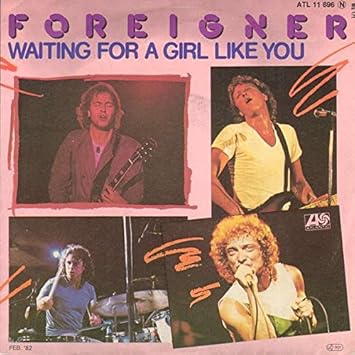Top 100 Songs
Dave’s Music Database lists are determined by song’s appearances on best-of lists, appearances on compilations and live albums by the featured act, and songs’ chart success, sales, radio airplay, streaming, and awards. Songs with the following artists are noted: AC = Albert Campbell, FS = Frank Stanley. According to Joel Whitburn’s Pop Memories 1890-1954, Henry Burr hit the top of the U.S. pop charts 24 times (#1 songs noted in list).
DMDB Top 1%:
1. Till We Meet Again (w/ AC, 1919) #1
2. I Wonder Who’s Kissing Her Now (1909) #1
3. In the Shade of the Old Apple Tree (as Irving Gillette, 1905) #1
4. Beautiful Ohio (1919) #1
5. Just a Baby’s Prayer at Twilight (1918) #1
6. When I Lost You (1913) #1
7. My Buddy (1922) #1
8. M-O-T-H-E-R (A Word That Means the World to Me) (1916) #1
9. Love Me and the World Is Mine (1906) #1
10. Oh, What a Pal Was Mary (1919) #1
11. Meet Me Tonight in Dreamland (1910) #1
12. Goodbye, Good Luck, God Bless You (Is All That I Can Say) (1916) #1
DMDB Top 5%:
13. The Trail of the Lonesome Pine (w/ AC, 1913) #1
14. Last Night Was the End of the World (1913) #1
15. I’m on My Way to Mandalay (w/ AC, 1914) #1
16. When I Was Twenty-One and You Were Sweet Sixteen (w/ AC, 1912) #1
17. The Song That Stole My Heart Away (1914) #1
18. I’m Sorry I Made You Cry (1918) #1
19. Red Wing (An Indian Fable) (w/ FS, 1907)
20. To the End of the World with You (1909) #1
21. There’s a Quaker Down in Quaker Town (w/ AC, 1916) #1
22. Close to My Heart (w/ AC, 1915) #1
23. I’m Forever Blowing Bubbles (w/ AC, 1919) #1
24. The Old Folks at Home (Swanee River) (1910)
25. In the Garden of My Heart (w/ FS, 1909)
26. When You’re a Long, Long Way from Home (1914)
27. Goodbye My Lady Love (1904)
28. Peg O’ My Heart (1913)
29. My Little Girl (w/ AC, 1915)
30. My Hawaiian Sunshine (w/ AC, 1917)
31. Sailing Down the Chesapeake Bay (w/ AC, 1913)
32. Always (1926)
33. Joan of Arc, They Are Calling You (1917)
34. After You’ve Gone (w/ AC, 1918)
35. There’s a Little Lane without a Turning on the Way to Home Sweet Home (1915)
36. Shine on, Harvest Moon (w/ FS, 1909)
37. Hindustan (w/ AC, 1919)
38. Feather Your Nest (w/ AC, 1921)
39. Somewhere in France Is the Lily (1918)
40. Oh, How I Wish I Could Sleep Until My Daddy Comes Home (1919)
41. For Me and My Gal (w/ AC, 1917)
42. You Planted a Rose in the Garden of Love (1914)
43. Come Down Ma Evening Star (1903) #1
44. Lookout Mountain (w/ AC, 1917) #1
45. Good Night Little Girl, Good Night (1906)
46. What’ll I Do? (with Marcia Freer, 1924)
47. To Have, to Hold, to Love (1913)
48. That Wonderful Mother of Mine (1919)
49. Are You from Heaven? (1918)
50. She’s the Fairest Little Flower Old Dixie Ever Grew (w/ FS, 1908)
51. In the Valley of the Moon (w/ Helen Clark, 1914)
52. When I Leave the World Behind (1915)
53. That’s How I Needed You (1912)
54. Faded Love Letters of Mine (1923)
55. Missouri Waltz (Hush-A-Bye Ma Baby) (w/ AC, 1917)
56. Smiles (w/ AC, 1918)
DMDB Top 10%:
57. Baby’s Prayer Will Soon Be Answered (1919)
58. Your Lips Are No Man’s Land But Mine (w/ AC, 1918)
59. She Is the Sunshine of Virginia (w/ AC, 1916)
60. Is There Still Room for Me ‘Neath the Old Apple Tree? (w/ AC, 1916)
61. You Were Just Made to Order Me (w/ AC, 1916)
62. When My Ship Comes In (w/ AC, 1915)
63. On Mobile Bay (w/ AC, 1911)
64. In the Heart of the City That Has No Heart (1914)
65. Dardanella (w/ AC, 1920)
66. Rainbow (w/ FS, 1908)
67. Just a Girl That Men Forget (1923)
68. There’s a Girl in the Heart of Maryland with a Heart That Belongs to Me (w/ Edgar Stoddard, 1913)
69. Honey on Our Honeymoon (1909)
70. All That I Ask of You Is Love (1910)
71. Flow Gently, Sweet Afton (1913)
72. You Have Always Been the Same Old Pal (1908)
73. The Rosary (1903)
74. Baby Shoes (1916)
75. I’ll Be with You in Apple Blossom Time (w/ AC, 1920)
76. There’s a Little Spark of Love Still Burning (1915)
77. I Wonder Where My Baby Is Tonight? (w/ Billy Murray, 1926)
78. Rose of Washington (1920)
79. I Love, and the World Is Mine (1908)
80. Daddy, You’ve Been a Mother to Me (1920)
81. Belgian Rose (w/ AC, 1918)
82. Maybe a Day, Maybe a Year (1915)
83. Old Pal, Why Don’t You Answer Me? (1921)
84. It’s Tulip Time in Holland (1915)
85. Shenandoah (w/ AC, 1917)
DMDB Top 20%:
86. Sleepy Time Gal (w/ Art Landry, 1926)
87. All the World Will Be Jealous of Me (1917)
88. Memories (as Harry McClaskey, 1916)
89. My Little Canoe (1904)
90. Wonderful One (1924)
91. As Long As the World Rolls On (1908)
92. Where the River Shannon Flows (1910)
93. Blue Bell (1904)
94. When My Baby Smiles at Me (1920)
95. Three Wonderful Letters from Home (1918)
96. Oh, Promise Me (as Irving Gillette, 1905)
97. Won’t You Come Over to My House? (1907)
98. I’m Going to Follow the Boys (w/ Elizabeth Spencer, 1918)
99. All Through the Night (1906)
100. Every Little Movement (w/ Elise Stevenson as Margaret Mayhew, 1910)
Resources and Related Links:
First posted 4/6/2012; updated 6/5/2022. |










